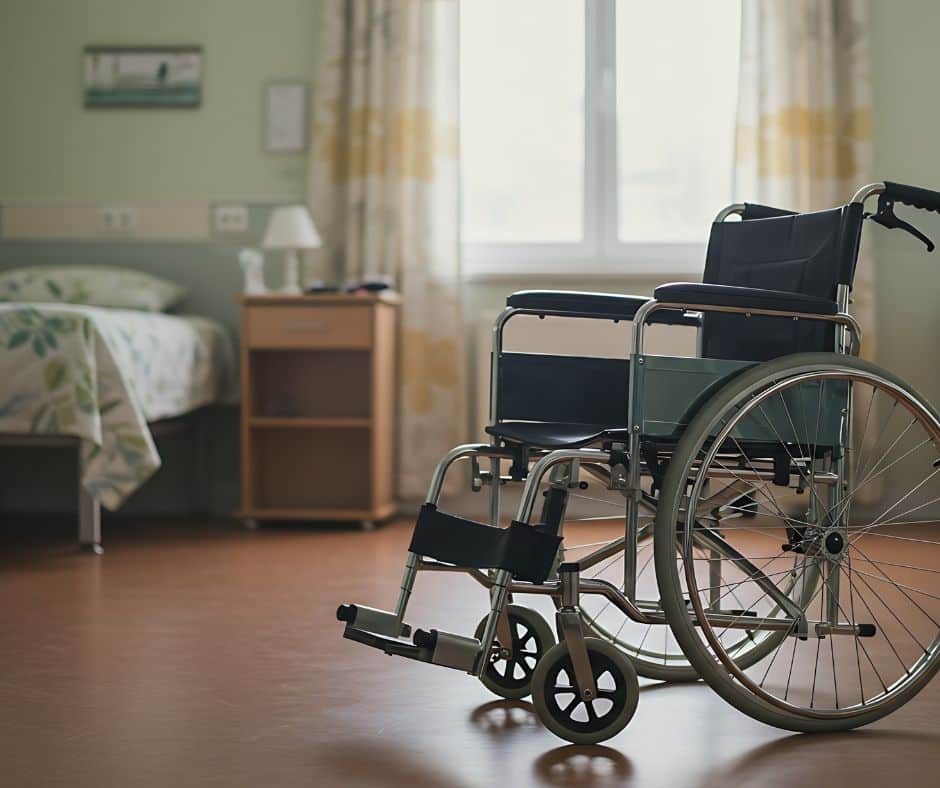
Replacing and repositioning aging skilled nursing facilities
Build for the future: Replacing and repositioning aging skilled nursing facilities
Across the Upper Midwest and beyond, many skilled nursing facilities built between the 1960s and 1990s are reaching the limits of their useful life. Long double-loaded corridors, shared bathrooms, aging HVAC systems, challenges in complying with current regulations, and institutional finishes no longer meet today’s expectations for comfort, efficiency, or care.
For mission-driven operators committed to resident dignity, workforce well-being, and long-term sustainability, maintaining outdated campuses is becoming increasingly difficult. Older buildings often require more frequent maintenance, cost more to heat and cool, and lack the flexibility to adapt to changing regulations and new care models. Replacing or repositioning these facilities is not just a capital improvement — it’s an investment in operational efficiency and community trust.
Why it’s urgent to reimagine aging facilities
Industry publications such as “Senior Housing Business” and “Skilled Nursing News” report a growing trend toward redeveloping or replacing legacy skilled nursing facilities as reimbursement models tighten and resident and workforce expectations evolve. Several forces are driving that shift.
1. Resident expectations have evolved.
Families now look for single-occupancy resident units, more natural light, and spaces that feel like home rather than an institution. Designs that promote autonomy, connection, and wellness help differentiate providers and strengthen census over time.
2. Workforce efficiency and satisfaction are critical.
Staffing shortages remain one of the most significant pressures in senior care. Inefficient layouts — with long walking distances, poor sightlines, or fragmented support zones — can accelerate fatigue and turnover. Modern layouts improve both efficiency and morale.
3. Deferred maintenance and energy costs are rising.
Aging mechanical, plumbing, building envelope, and life-safety systems consume a larger share of operating budgets and can make code compliance difficult. Strategic replacement or modernization can reduce these risks while improving environmental performance.
4. Reimbursement and acuity demands are changing.
Facilities that can’t flex to higher-acuity or transitional care needs risk losing referrals and occupancy. Adaptable spaces, equipped for today’s technology and tomorrow’s models of care, are increasingly essential to financial stability.
For nonprofit and regional systems, these challenges go beyond finances — they shape an organization’s ability to deliver consistent, compassionate care and sustain its mission.
How to reposition or replace a skilled nursing facility the right way
The decision to rebuild, replace, or reposition requires thoughtful planning and alignment between mission, market, and operations. A structured, human-centered process ensures every dollar invested translates into better outcomes for residents, staff, and the bottom line.
1. Begin with vision and purpose.
Start by defining the daily experience you want residents and caregivers to have. Private rooms, personal bathrooms, daylight, and access to nature all reinforce dignity and independence.
At the same time, designs that shorten staff travel distances, improve line-of-sight, and position supplies and support zones efficiently help reduce stress and strengthen care quality. In other words, design for people first — and performance will follow.
2. Evaluate replacement and repositioning options.
Some campuses may be too outdated to renovate feasibly. Others can be reimagined through selective renovation or adaptive reuse. Repositioning may include converting skilled nursing wings into assisted living or memory care, rebuilding certain sections, or adding short-term rehab units.
Full replacement offers modern systems and layouts, but it also requires higher upfront investment and close regulatory coordination. Many organizations choose hybrid strategies — rebuilding where impact is greatest and modernizing where existing structures still perform well.
3. Plan early for licensure, regulation, and funding.
In some states, preserving or transferring existing licensure or certificate-of-need (CON) approvals can add complexity. Engaging regulators early helps avoid costly project delays.
Financing solutions may combine philanthropy, traditional debt, tax-exempt bonds, or public-private partnerships. For nonprofit operators, community campaigns focused on resident dignity and care quality can attract donor support.
4. Design for longevity and adaptability.
Future-ready design goes beyond appearance. Energy-efficient systems, durable materials, and flexible infrastructure support long-term sustainability. Facilities that can adapt to changing regulations, new technology, higher acuity levels, or home-health integration will remain relevant longer.
Through Community Living Solutions’ design-build approach, operators gain alignment between vision, budget, and execution — ensuring that capital investment directly enhances care delivery and operational performance.
Common challenges — and how to overcome them
Each campus renewal brings unique hurdles, but successful operators share similar strategies:
- Engage regulators and staff early. Transparent collaboration builds trust and keeps budgets and timelines predictable.
- Phase construction to minimize disruption. Building new wings before decommissioning old ones maintains census and continuity of care.
- Model operational savings. Demonstrate long-term ROI through projected energy, staffing, and maintenance efficiencies.
- Communicate openly. Keep residents, families, and the broader community informed to reinforce continuity of mission.
The most forward-thinking organizations are using physical renewal to drive cultural renewal — creating campuses that function as true communities of care.
The payoff: sustainable care environments that work for everyone
Modernizing a skilled nursing facility is more than a construction project; it’s a reinvestment in people. Well-planned environments enhance resident dignity, improve staff experience, and strengthen an organization’s operational foundation for decades to come.
In the Upper Midwest, many operators are taking the long view, turning aging infrastructure into opportunity through careful planning, creative funding, and collaborative design-build delivery. Those who act early will shape the next generation of care — not as institutions, but as homes where people thrive.
If you’re ready to reimagine what’s possible for your campus, we can help you plan, design, and build modern skilled nursing environments that support residents, empower staff, and strengthen financial performance. Contact us today to get started.